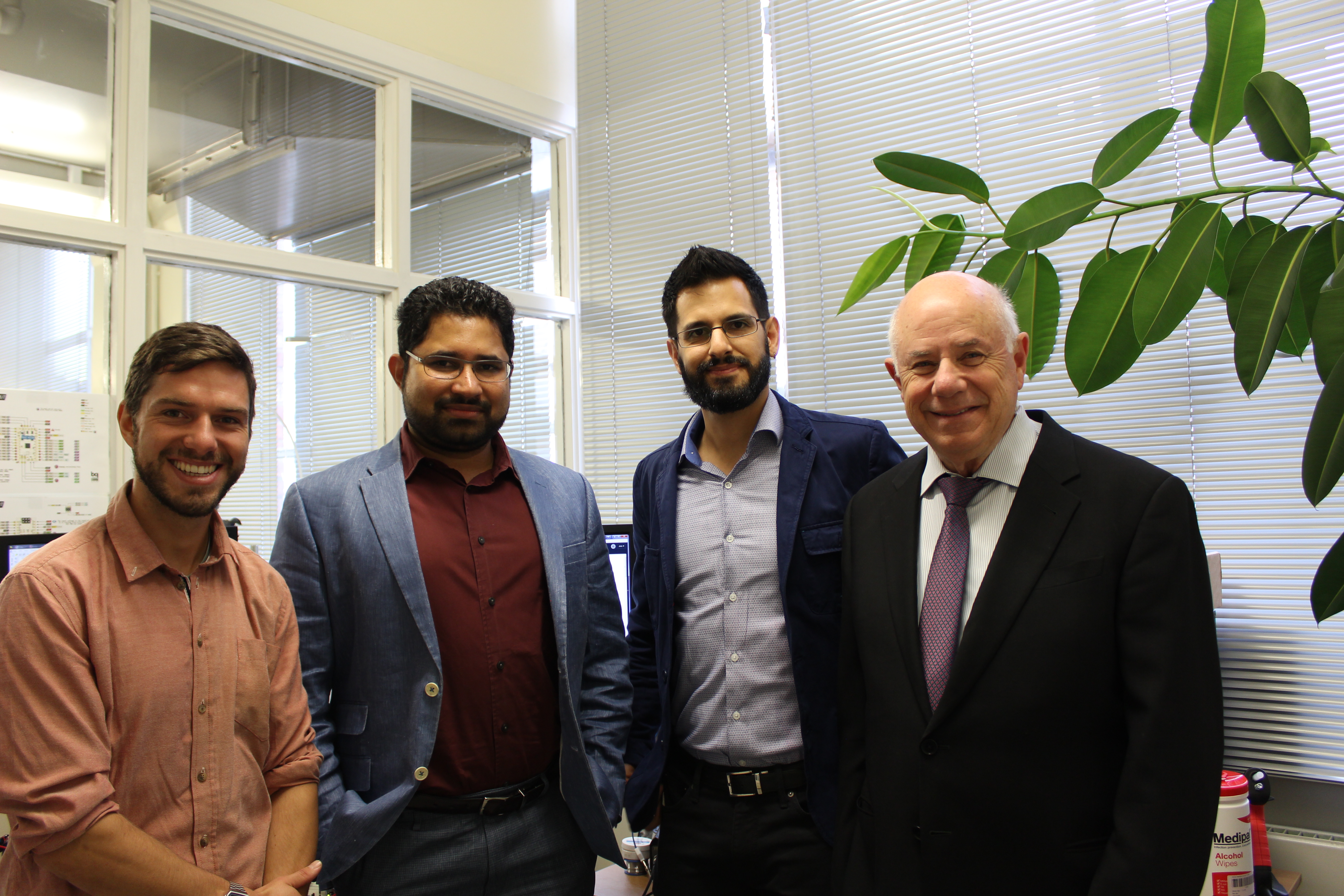
Graphene scientists with Eli Harari.
Scientists at The University of Manchester have fabricated highly miniaturized pressure sensors using graphene membranes which can detect minute changes in pressure with high sensitivity, over a wide range of operating pressures.
Writing in Nanoscale, Dr. Aravind Vijayaraghavan and recently graduated PhD student Dr. Christian Berger have shown that it is possible to make an atomically thin membrane of graphene float just nanometers above the surface of a silicon chip.
When pressure moves this membrane closer to the surface of the chip, the resulting change in capacitance is measured to read out the pressure change. By fabricating thousands of such floating membranes next to each other, a device can be made of exceptionally high sensitivity to pressure changes.
Graphene is the world’s first two-dimensional material. The design takes advantage of its extraordinary thinness, combined with its high flexibility and the highest strength of any known material; a unique combination of superlative properties without which such a technology would not be possible.
Vijayaraghavan says, “Despite its amazing strength, a single atomic layer thin graphene membrane is impossible to grow and handle without causing cracks and pin-holes, which would lead to the failure of the device.
“In order to overcome this, we use this graphene membrane in conjunction with a very thin polymer support layer, which allows us to produce thousands of floating graphene membranes closely packed into a small area, resulting in this highest performance pressure sensor.”
Vijayaraghavan and Berger have established a spinout company, Atomic Mechanics, with a view of commercializing this technology. Dr. Berger, and fellow PhD student Daniel Melendrez-Armada, were also recently awarded the Eli and Britt Harari Graphene Enterprise award for their touch interface concept based on this pressure-sensor technology.
Berger says, “Our sensor can find a range of applications, such as in engines, industrial plants and even household Heating, ventilation, and air conditioning (HVAC) systems, which offers us a large market. The technology can also be used to develop next-generation touch screens for consumer electronics and in new types of medical devices.”
Source: University of Manchester




